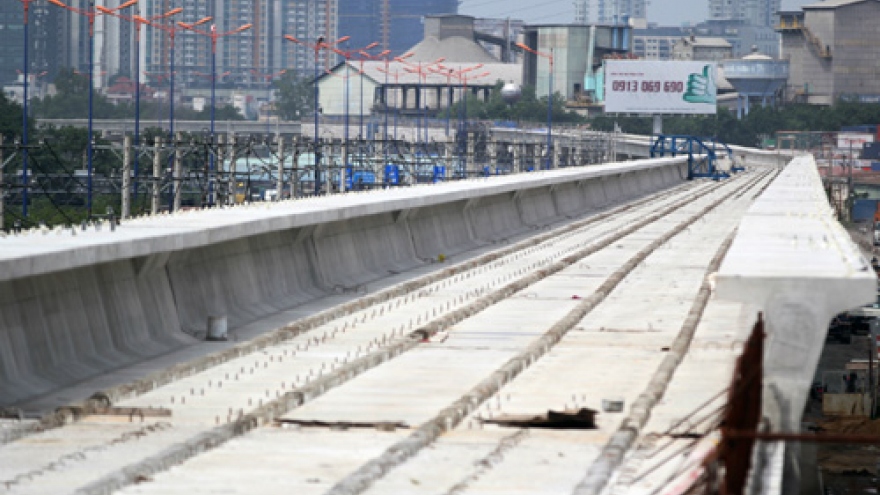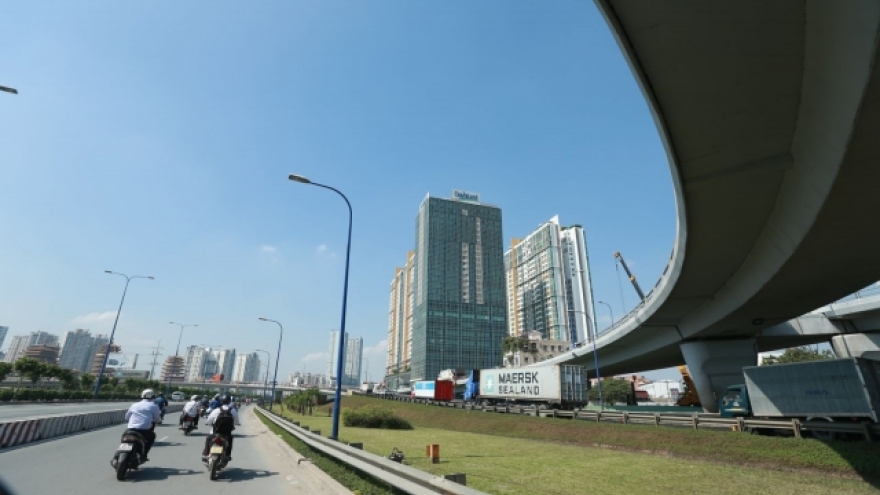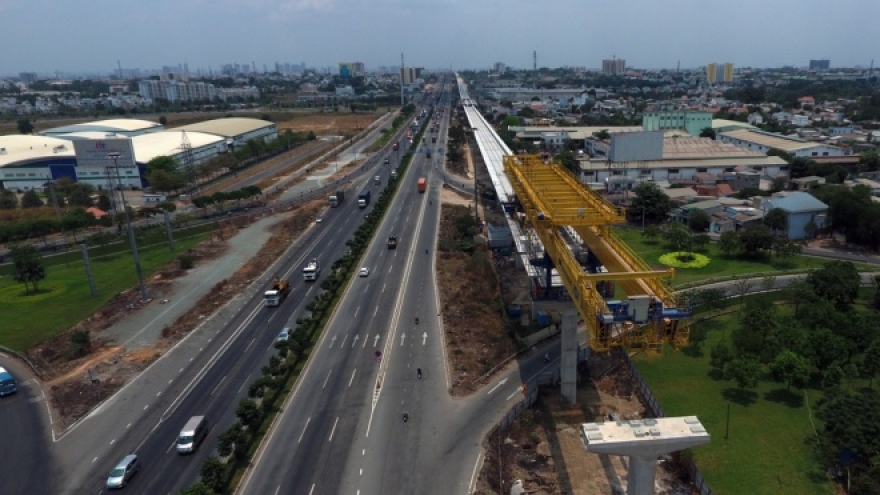Saigon plans US$250 million metro link to Tan Son Nhat airport
Ho Chi Minh City will seek the central government’s approval to build a US$250 million underground metro line which will link Ton San Nhat International Airport to the city’s planned metro system.
A two-kilometer line, named 4b-1, would link Vietnam’s biggest airport to Metro Line No.5 in Tan Binh District, the Giao Thong (Transport) news site reported on November 13, quoting a pre-feasibility study that has recently been compiled by Korean consultants.
The municipal government plans to borrow about US$224 million for the project, while the remainder would be covered by the state budget.
 |
| Ho Chi Minh City is accelerating the development of its urban railway network, including its first metro line in this picture. |
City authorities aim to submit the feasibility study to the prime minister in the first quarter of 2018. They expect to kick off construction in the first quarter of 2019 and finish in 2024, the news site said.
Ho Chi Minh City is also seeking parliamentary approval to implement the first phase of Metro Line No.5 with total investment capital of VND41 trillion (US$1.84 billion).
The municipal administration recently submitted a proposal to the government for Phase 1 of the urban rail project, according to the city's Management Authority for Urban Railways.
As one out of three urban railways that have been given top priority for 2016-2021, Metro Line No.5 would run for nine kilometers and connect Metro Line No.2 at Tan Binh District's Bay Hien Interchange with Metro Line No.1 at the Saigon Bridge Station.
The European Investment Bank alongside the German Reconstruction Bank have offered a combined US$381 million loan, while the Spanish government has pledged US$299.38 million, which would cover nearly 40% of the total investment.
The remainder will be provided by the Asian Development Bank (US$517.11 million) and Vietnam’s state budget (US$504 million).
Metro Line No.5 is scheduled to open by 2025, and will be able to withstand level-7 magnitude earthquakes.
Most of the line will be underground but 1.43 km will be along an elevated rail with six trains traveling at maximum speeds of 90km per hour.



